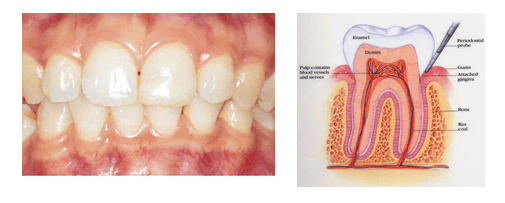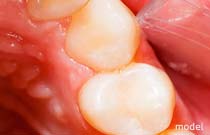Visit Our Office 77 Rolling Oaks Dr., Thousand Oaks, CA 91361(805) 379-5262
Deep Cleaning: Scaling and Root Planing
Many patients arrive at the office expecting to get a regular cleaning done, then surprised to find out that they will require deep cleaning, a procedure called Scaling and Root Planing, that is a lot more invasive and expensive.
Deep Cleaning
Since the infection is below the surface of the gum tissue and painless in the early stages, many patients are unaware of its existence. Many times I hear questions like, “Why do I need a deep cleaning, I have never needed one in the past?,” and “Why can’t I just get a regular cleaning done?”
Recent studies show that there is a definite relationship between periodontal disease and certain heart conditions and other systemic diseases. Just as your health condition changes, for example in the past you may have not had high blood pressure or high cholesterol, so can your dental condition.
The following diagrams illustrate the difference between healthy gums and gums that are inflamed with a possible periodontal infection.
Healthy Gums

Normal, healthy gums are firm, pinking, and do not bleed when you normally brush your teeth. Healthy gums keep our teeth anchored into place securely. Normal cleaning consists of the removal of plaque, calculus (tartar), and stains from the supra-gingival (above the gum) areas of the tooth structure. This is accomplished by dental instruments that remove plaque and scrape away deposits from the crown of the tooth.
Gingivitis

Inflammation of the gums is called gingivitis. The infected gums swell, bleed easily, recede, and loosen from the teeth. Notice the redder and more inflamed texture compared to the above diagram.
As noted in the above diagram, the gingiva is inflamed with build-up of plaque and tartar along the root surface that houses thousands of bacteria. As your body’s defense system tries to attack and combat the bacterial irritant it releases enzymes that breakdown the bone structure holding the teeth in place.
The only way to treat the toxins is by a more invasive procedure called scaling and root planing as the toxins are located below the crown of the teeth (also referred to as deep cleaning). Removing these toxins allows the body’s own immune system to begin the healing process.
The following diagrams illustrate the dental consequences of no treatment and not removing the irritant. Keep in mind there is also an accompanying risk of a systemic component.




